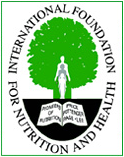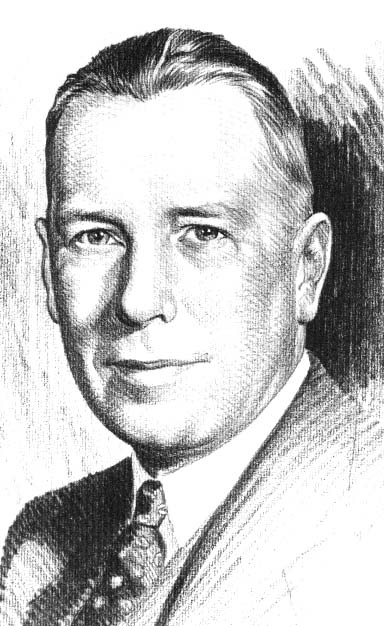Raw Butter is Real Butter – Vitamin A, E and Dr. Price’s ‘X’ Factor
What did Dr. Lee tell us? “You can’t compare apples to oranges, just like you can’t compare a synthetically manufactured product like margarine, or what some call oleo, with raw unpasteurized butter. Real Butter is a living food, a nutritionally dense product from nature and the other is a dead wasteland of chemicals that’s manufactured and processed.”
By Dr. Royal Lee, President of the Lee Foundation for Nutritional Research
Somehow, the way we look at and accept research changed after December 7, 1941. By the end of World War II, the new scientific model of research became the norm using animal studies. Empirical data previously collected by researchers and practitioners through their observations were no longer accepted.
In 1937, Professor Fred Hale at the Texas Agricultural Experimental Station, proved the necessity of good fats and oils in the prenatal care of pigs to block deformities in the offspring. These special nutritional factors present in raw butter were accepted without question and known up to 1942. It had been shown that raw butter has the following characteristics of superiority over commercially manufactured oleo-margarine – a cheap imitation of the real, natural form of butter. This is why pregnant mothers shouldn’t be afraid of healthy fats and oils, like those in raw butter. These are the facts we know about the value of real butter:
- The nation’s best source of vitamin A is unpasteurized raw butter, gathered in the spring each year from cows eating that newly sprouted grass. (1)
- The vitamin A in butter was three times as effective as the vitamin A in fish liver oils. (1)
- The natural vitamin D3 in butter was found 100 times as effective as the common commercial form of vitamin D (viosterol). (2)
- The raw form of butter, prescribed by physicians as a remedy for tuberculosis, psoriasis, xerophthalmia, dental caries and in preventing rickets, has also been reported effective in strengthening the immune system. (3)
- Raw Butter carries vitamin E in sufficient quantity to prevent deficiency reactions. (4 & 5)
Since 1941, new and important evidence has accumulated, which indicates other nutritional functions are supplied by butter. This evidence appears to revolve around the physiological ramifications of the effects of the vitamin E complex.
Up to the present, vitamin E has been considered a tocopherol, and its function analyzed as nothing more than a physiological anti-oxidant. (6) It now appears evident that the food-based whole complex of vitamin E is being protected from oxidation by the tocopherol group. The same mistake in attributing vitamin E activity to tocopherols has been made in the case of the promotion of pure viosterol as vitamin D, ascorbic acid as vitamin C, niacin as the anti-pellagra vitamin, pyridoxine as B6, or folic acid as the anti-pernicious anemia fraction of liver.
In each case, the isolation of one factor as the “complete vitamin” in question has embarrassed the discoverer in his assumption that he had discovered the “pot of gold” at the rainbow’s end, by the attribution of vitamin activity to some synthetic or pure crystalline component of the natural complex. No reasonable student of nutrition today can deny the axiom that all vitamins are complexes and cannot exert their normal physiological effect other than as the complete complex, as found in natural foods.
The true vitamin E is found in the chromatin material of the germinal tissues of plant and animal, and in young plants that are in a state of rapid growth. It seems to be a phospholipid carrying a special fatty acid in combination that has heretofore traveled under the cognomen of vitamin F. (Vitamin F was first discovered as a part of the wheat germ oil vitamin complex- at least the term vitamin F was first used to designate the essential fatty acid fraction.)
The fact that an unsaturated fatty acid as vitamin F is a part of the E complex, probably in molecular combination, explains the close relationship between the two vitamins in their synergistic support of cell division in reproduction, in maintenance of epithelium (where cell division is also predominant), and in kidney and liver metabolism, both epithelial activities. It explains the fact that both are factors in calcium metabolism, with vitamin E deficiency resulting in bone resorption (7), just as vitamin F deficiency results in less calcium available to the bone.(8)
Tocopherol administration in excess also results in bone-calcium loss, just as is caused by a deficiency of vitamin E. (7) So, again we have more evidence that tocopherol is NOT the vitamin E, but rather a protector that can, in excess, reduce the availability of traces of the real vitamin. Now, just what is the real function of the real vitamin E complex?
A factor in young grass is apparently the same one as described by Dr. Weston A. Price in the second edition of his book, Nutrition and Physical Degeneration, which he called “Activator X” and was found only in butter from cows that fed on new spring grass. “Activator X” seemed very susceptible to oxidation, being lost in the butter within a few months after its production. “Activator X” was shown to promote calcification and health of bones and teeth in human patients. It inhibited the growth of the caries bacillus (facto-bacillus acidophilus) completely, one test showing 680,000 salivary bacterial count before the use of “Activator X” and none after.
Today’s research confirms Dr. Price’s findings that this “X” factor found in the spring’s first grass growth supports the definition of sexual development. Animals not getting this new grass with the Activator X (but getting Tocopherol) required 23% MORE time to become sexually mature.

